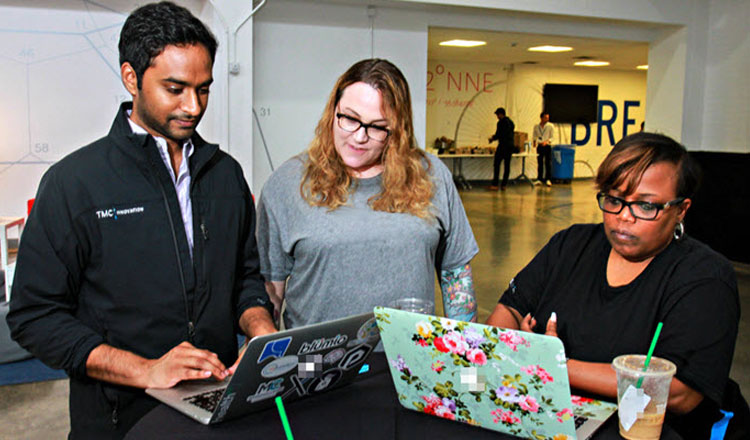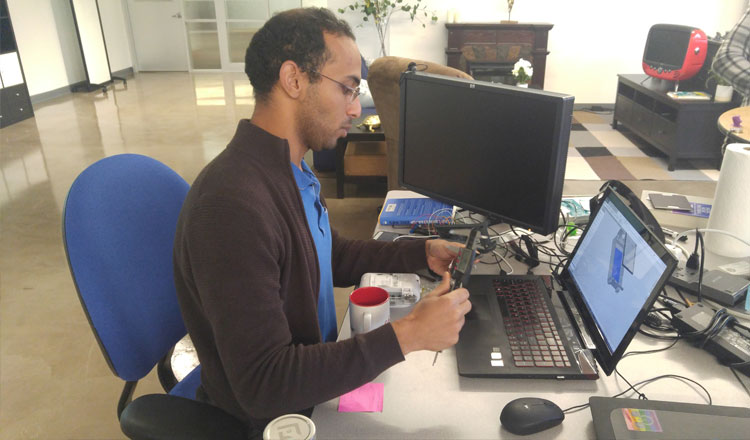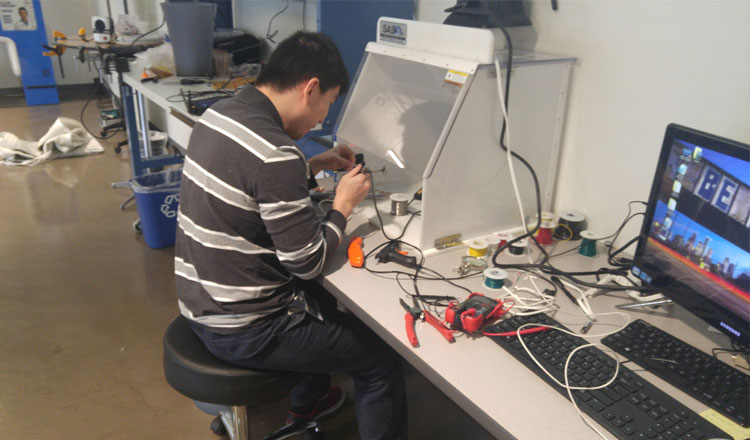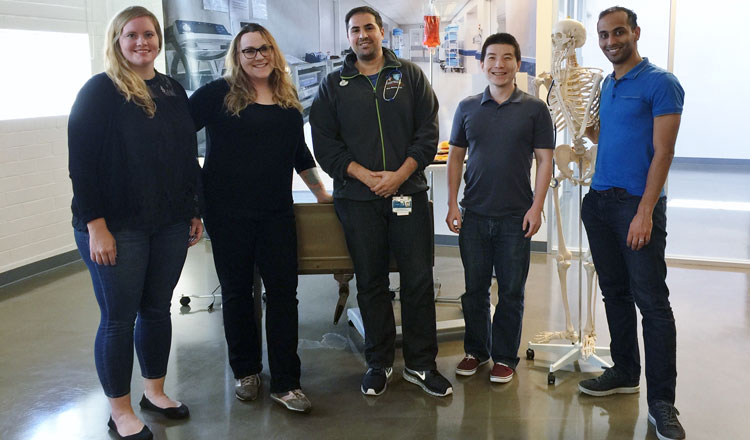By Nadia Morris
How can AT&T use its expertise in connectivity and software to improve the health care ecosystem for hospitals, caregivers, researchers, administrators, and, most importantly, patients?
A year ago, we opened the doors to the AT&T Foundry for Connected Health in Houston and went after the answer to this question. Finding the right collaborators within the medical community and picking the right projects were key. We’ve had over 100 companies come through the facility in the first year.
Our work with the Texas Medical Center (TMC) is a unique collaboration with the largest medical center in the world. They’ve become an integral part of helping us rapidly address the challenges the medical community faces. Critical, real-world feedback from doctors, nurses and patients in the surrounding hospitals and clinics is just steps away in the TMC.
And we’re not just focusing on big companies and organizations. The TMC accelerator program dedicated to health care startups, called TMCx, has allowed me the opportunity to mentor startups and innovators.
With a year under our belt, one opportunity we have in the connected health care ecosystem is clear - creating technology to enhance quality of life.
One notable example is our work with Aira on glasses for the visually impaired.
Aira was the first product to come out of the AT&T Foundry for Connected Health. The glasses help the blind and visually impaired navigate daily tasks and tackle new challenges. The assistive technology, coupled with our reliable and secure wireless connectivity, helped a partially blind athlete successfully compete in this year’s Boston Marathon. It’s truly groundbreaking technology. From start to finish, the project took just 12 weeks.
My team is excited to continue exploring the frontiers of medical technology. But we’re also looking forward to bringing more collaborators into our space to build better solutions—faster.
The connected health field is large. Our team focuses on several areas: mobile caregivers, business IoT solutions, clinical health, and in-home help for the independent elderly.
The AT&T Foundry for Connected Health features 3 working stations for these areas. Future plans for our Independent Living Lab work station include adding non-obtrusive sensors. Think bed and couch pressure sensors, ultrasonic sensors for motion, temperature sensors and magnetic sensors. We want patients to spend less time getting poked and prodded, and more time living in the comfort of their own homes. With these smart devices, health care happens in the background.
And when patients do need to visit a doctor or caregiver, incorporating actual medical devices and equipment to analyze interference and interoperability will help make hospitals even smarter than they are today. An example of this is tracking inventory of medical supplies found in patients’ rooms to know when to replace them. We do this by using radio-frequency identification (RFID) – a form of radio wave technology – and Bluetooth technology to track the in-room supplies, and our LTE network to transmit the data into the cloud.
Medical device technology is getting better faster than it ever has before, driven in part by the work AT&T and the AT&T Foundry is doing.
For example, we’re working with a major medical device manufacturer to create a connected medical device that monitors the device’s diagnostics from a distance. Connecting it using LTE and adding in location tracking and security would let a doctor or other caregiver monitor the patient and the device remotely.
No need to visit a doctor’s officer or hospital to gather that data. And since the device is connected via our LTE network, health care companies don’t have to take on the extra responsibility of network management. And LTE-M technology could help us improve network coverage in hospitals and other medical buildings where signal penetration can be a problem.
There are also opportunities for connected health care beyond connected devices. For example, with AT&T Network 3.0 Indigo, we’re exploring what we call “data communities,” where groups such as hospitals can share data in a highly secure manner, such as MRI images, in a controlled manner with other groups such as researchers and doctors.
Connecting patients, clinicians, researchers, and administrators through our network is a tremendous opportunity and privilege for us. Health care is ultimately about taking care of the people we love, and it’s exciting to be part of that mission.
As I reflect on the last year, I’m proud of the successes and milestones. But we’re just getting started. The future of the AT&T Foundry for Connected Health is ripe with opportunity.











